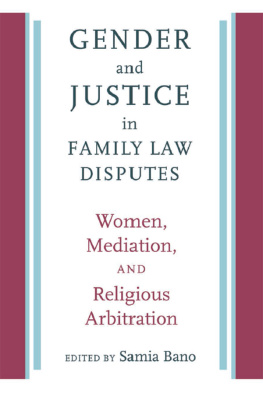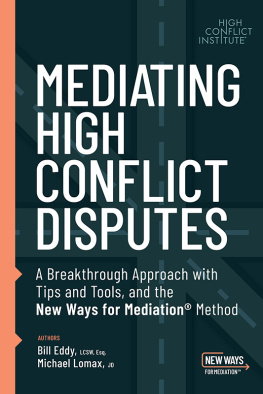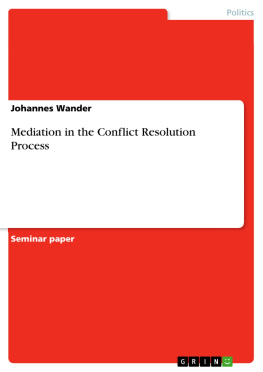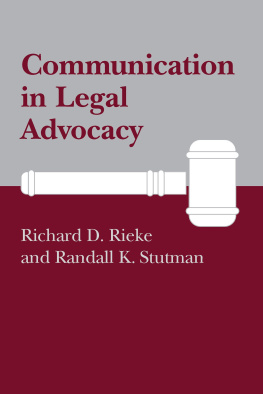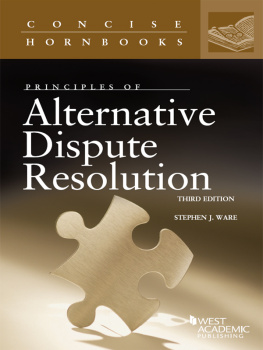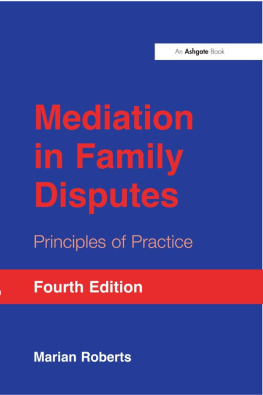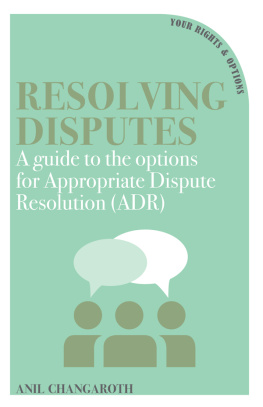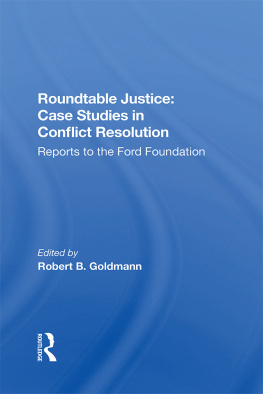Samia Bano - Gender and Justice in Family Law Disputes: Women, Mediation, and Religious Arbitration
Here you can read online Samia Bano - Gender and Justice in Family Law Disputes: Women, Mediation, and Religious Arbitration full text of the book (entire story) in english for free. Download pdf and epub, get meaning, cover and reviews about this ebook. year: 2017, publisher: Brandeis University Press, genre: Home and family. Description of the work, (preface) as well as reviews are available. Best literature library LitArk.com created for fans of good reading and offers a wide selection of genres:
Romance novel
Science fiction
Adventure
Detective
Science
History
Home and family
Prose
Art
Politics
Computer
Non-fiction
Religion
Business
Children
Humor
Choose a favorite category and find really read worthwhile books. Enjoy immersion in the world of imagination, feel the emotions of the characters or learn something new for yourself, make an fascinating discovery.
- Book:Gender and Justice in Family Law Disputes: Women, Mediation, and Religious Arbitration
- Author:
- Publisher:Brandeis University Press
- Genre:
- Year:2017
- Rating:4 / 5
- Favourites:Add to favourites
- Your mark:
- 80
- 1
- 2
- 3
- 4
- 5
Gender and Justice in Family Law Disputes: Women, Mediation, and Religious Arbitration: summary, description and annotation
We offer to read an annotation, description, summary or preface (depends on what the author of the book "Gender and Justice in Family Law Disputes: Women, Mediation, and Religious Arbitration" wrote himself). If you haven't found the necessary information about the book — write in the comments, we will try to find it.
How mediation and religious dispute-resolution mechanisms operate within diverse communities
Samia Bano: author's other books
Who wrote Gender and Justice in Family Law Disputes: Women, Mediation, and Religious Arbitration? Find out the surname, the name of the author of the book and a list of all author's works by series.
Gender and Justice in Family Law Disputes: Women, Mediation, and Religious Arbitration — read online for free the complete book (whole text) full work
Below is the text of the book, divided by pages. System saving the place of the last page read, allows you to conveniently read the book "Gender and Justice in Family Law Disputes: Women, Mediation, and Religious Arbitration" online for free, without having to search again every time where you left off. Put a bookmark, and you can go to the page where you finished reading at any time.
Font size:
Interval:
Bookmark:

When Is Mediation Mediatory and When Is It Really Adjudicatory?
RELIGION, NORMS, AND DECISION MAKING

Lisa Webley
FAMILY PROBLEMSINCLUDING THE BREAKDOWN of formally and informally recognized intimate relationships, disputes about money, property, and children, intergenerational and parent(s)child conflict, and domestic violenceare among the most common disputes liable to require third-party help (Genn 1999, 2000; Trinder et al. 2014). These problems are often multifaceted and interconnected, and the narrative between the disputants may be highly contested, emotionally charged, and at the heart of individuals identity, beliefs, and values. The issues are frequently reframed over time as family members uncouple and recouple, children mature, and the dynamics between the generations shift; additional parties may enter, be the focal point of, and exit the dispute as time elapses (Ekeelaar, Maclean, and Beinart 2000; Ingelby 1988; Davis 1988; Webley 2010a). And it is often difficult for family members to seek support from those closest to them given that the dispute has arisen within kinship groups, sometimes restricting their access to guidance within the family and engendering a reluctance to seek help from a wider circle of support so as to keep family disharmony private from the local community.
It is, therefore, unsurprising that people turn to third-party professionals to seek advice about where they stand, what they should do, and how they may settle their family problems. Not everyone will seek recourse to law, but some will consider it an essential step when children, property, and money are at stake and they feel thoroughly disempowered. Few people will be able successfully to navigate without a lawyers help the complex legal provisions and procedural rules that bedevil a family justice system designed for a different age in which legal advice, assistance, and advocacy were largely funded through the legal aid scheme (Webley 2015b). Those who feel more confident of their ability to negotiate with family members may be looking for third-party help to facilitate the negotiation process, with or without reference to law. Where the factual basis of the problem is accepted by all sides, negotiations may center on developing creative, practical, and mutually acceptable solutions that allow for closure. Where the factual basis is in dispute and peoples values and identities appear to be at odds, there is the thorny issue of whose norms are to be applied in pursuit of the resolution. Historically, in England and Wales when the views of professionals were sought, those professionals would assert the prevailing legal norms to reach an outcome (Webley 2015b). Increasingly, as private ordering is championed by the state, the norms to be used may be agreed upon by the parties or overtly or covertly imposed by one or more of the parties or by a third party. The norms may have some relationship to law; they may be personal values or religious and/or cultural norms, and they may be held in common by all concerned, by the parties if not the third party, or not shared by any (Shah-Kazemi 2000). Consequently, the settlement or judgment may not be one that corresponds to current legal precedent and practice. Should the parties be permitted to bargain away their legal rights in pursuit of a settlement that corresponds to their cultural expectations of family life and childrearing? Does society have an interest in a private settlement, and does it have a procedural interest in knowing how the settlement was derived and a substantive interest in the content of the outcome?
These questions will be addressed in later chapters in this volume and from a variety of perspectives. This chapter aims to set the scene for what follows. In the first section of the chapter I seek to uncover some of the common confusions in the lexicon of dispute resolution to provide a platform from which we may interrogate our stance on family mediation (and in later chapters on family arbitration) in an increasingly culturally heterogeneous society and at a time when family mediation has become a mandatory condition for access to the family justice system in England and Wales (introduced by the Children and Families Act 2014, s 10). In the second section, I examine the contested terrain of mediation, the mediators role and identity in the family justice context, with reference to mediator neutrality and impartiality. Some conclude that there is a need for a nuanced and developed appreciation of the role of reflexivity in the mediation project and for and by mediators, in place of mediator neutrality, so as to guard against subconscious bias and the subordination of gender and other power dynamics within the mediation environment. This provides a basis for considering the role of mediators and what they contribute to a site of struggle as regards gender, equality, and justice. The third section considers the controversial issue of whose norms should be applied in reaching a decision, taking into account the mediators stance, issues of consensual decision making, what interest the state and society more broadly have in privately ordered disputes, and when the (alternative) dispute resolution becomes dispute resolution performed by self-appointed judges using a parallel and sometimes covert and subconscious set of norms that are not easily scrutinized, challenged, or appealed. In short this chapter addresses when mediation is truly mediatory and when it is really adjudicatory or complicit in the dominant partys narrative such that any settlement is not consensual, fair, or just according to the law or purported mediation practice.
Dispute Resolution: Modes, Means, Ideologies
Much of the discourse on (alternative) conflates a number of key components of dispute settlement such that it can be difficult to ask fundamental questions about the extent to which each mode can deliver fairness. There is often an elision of one or more of the following:
the mode of dispute determination or settlement (court adjudication, arbitration, mediation, third-party negotiation, negotiation between the parties with periodic third-party advice, negotiation purely between the parties, or a combination of these modes); with
the theoretical framework underpinning the mode of dispute resolution (adversarialism, mutualism/consensus, or other); and
the role that third parties may be playing within the dispute (partisan, neutral, or both, facilitator or decision maker, or both); and
the approaches that they are adopting in the dispute (facilitative, evaluative, transformative, adopted overtly or covertly as regards the parties, consciously or subconsciously by the third-party professional); with
the professional affiliation of the third-party professional (lawyer, non-lawyer, other, a range of professional affiliations); with
the norms (and whose norms) to be used in the decision-making process to reach the determination or settlement (law, familial values, cultural norms, religious norms, a combination; shared by the parties and the third party/parties, the parties only, one party and the third party, not shared by any); and finally with
resolution by means of public ordering or private ordering ideologies.
Many of these components interconnect, overlap, and/or map onto other components more commonly than do others; for example, court adjudication is often associated with lawyers acting as partisans (increasingly less so with the rise of self-represented litigants; see Moorhead and Sefton 2005; Williams 2011; Trinder et al. 2014), and court adjudication has been heavily associated with adversarialism (see examples in Lewis 2000, 67), although this too is something of a myth in family law cases (see Davis 1988: 4761; Ingelby 1988, 436; Eekelaar, Maclean, and Beinart 2000, 18289; Webley 2010a). Mediation is most frequently associated with a neutral third-party facilitator, the theory of mutualism or consensus-based settlement, and the ideology of private ordering, acceptance of plural viewpoints, and mutual respect (although there are contrary narratives; see Dingwall, 1988; Greatbatch and Dingwall 1989; Dingwall and Greatbatch 1991; Mulcahy 2001). These overlaps and intersections only add to the level of complexity and the possibility of misrecognition in the assessment of procedural and substantive equality and fairness, by whom and for whom. This is all the more difficult in a context where many family disputes are settled behind closed doors at home, in a community center, in a professionals office, or in a closed court and when few written records are available for public scrutiny and analysis. In addition, many professionals are now dual or triple qualifying as lawyers, as mediators, and as arbitrators too, and switching between modes, roles, approaches, affiliations, and norms depending on context (Webley 2010a). The aforementioned components are not mutually exclusive, and thus the parties may employ them consecutively or concurrently. It is easy to see how heuristics develop to describe the bundle of attributes associated with different modes of dispute resolution, even ifas we shall see later in this chapterthese heuristics mask great variations in combination and lead to some problematic assumptions about autonomy and justice, fairness and equality.
Next pageFont size:
Interval:
Bookmark:
Similar books «Gender and Justice in Family Law Disputes: Women, Mediation, and Religious Arbitration»
Look at similar books to Gender and Justice in Family Law Disputes: Women, Mediation, and Religious Arbitration. We have selected literature similar in name and meaning in the hope of providing readers with more options to find new, interesting, not yet read works.
Discussion, reviews of the book Gender and Justice in Family Law Disputes: Women, Mediation, and Religious Arbitration and just readers' own opinions. Leave your comments, write what you think about the work, its meaning or the main characters. Specify what exactly you liked and what you didn't like, and why you think so.

